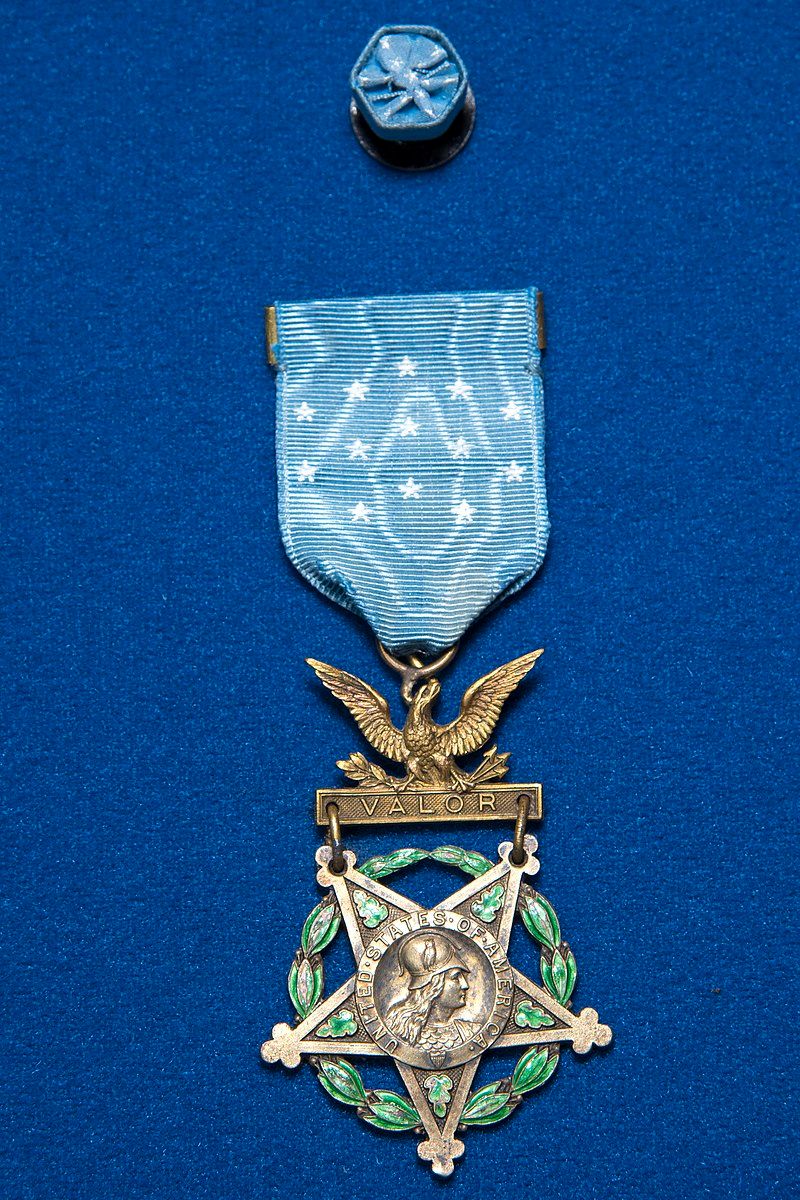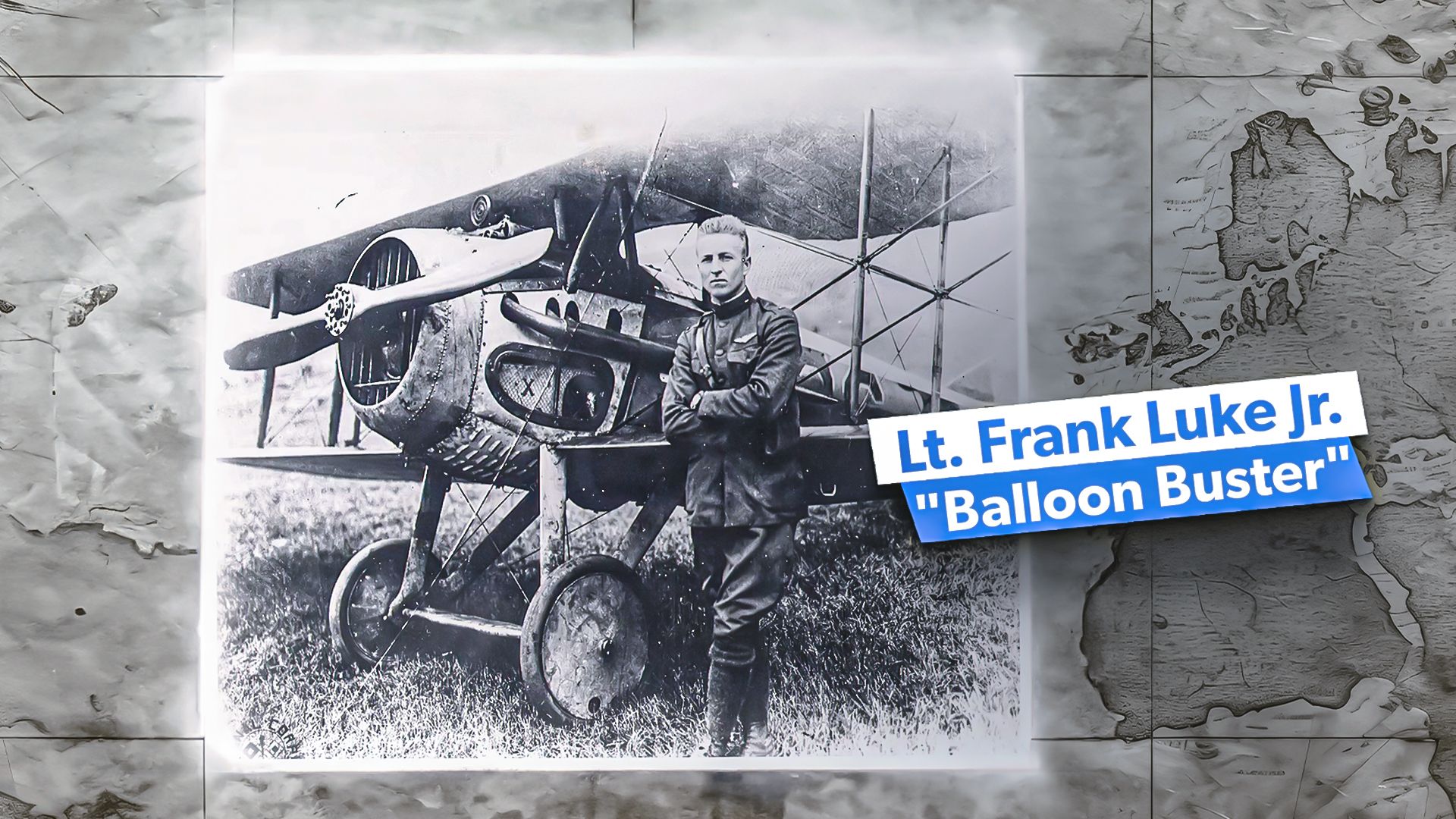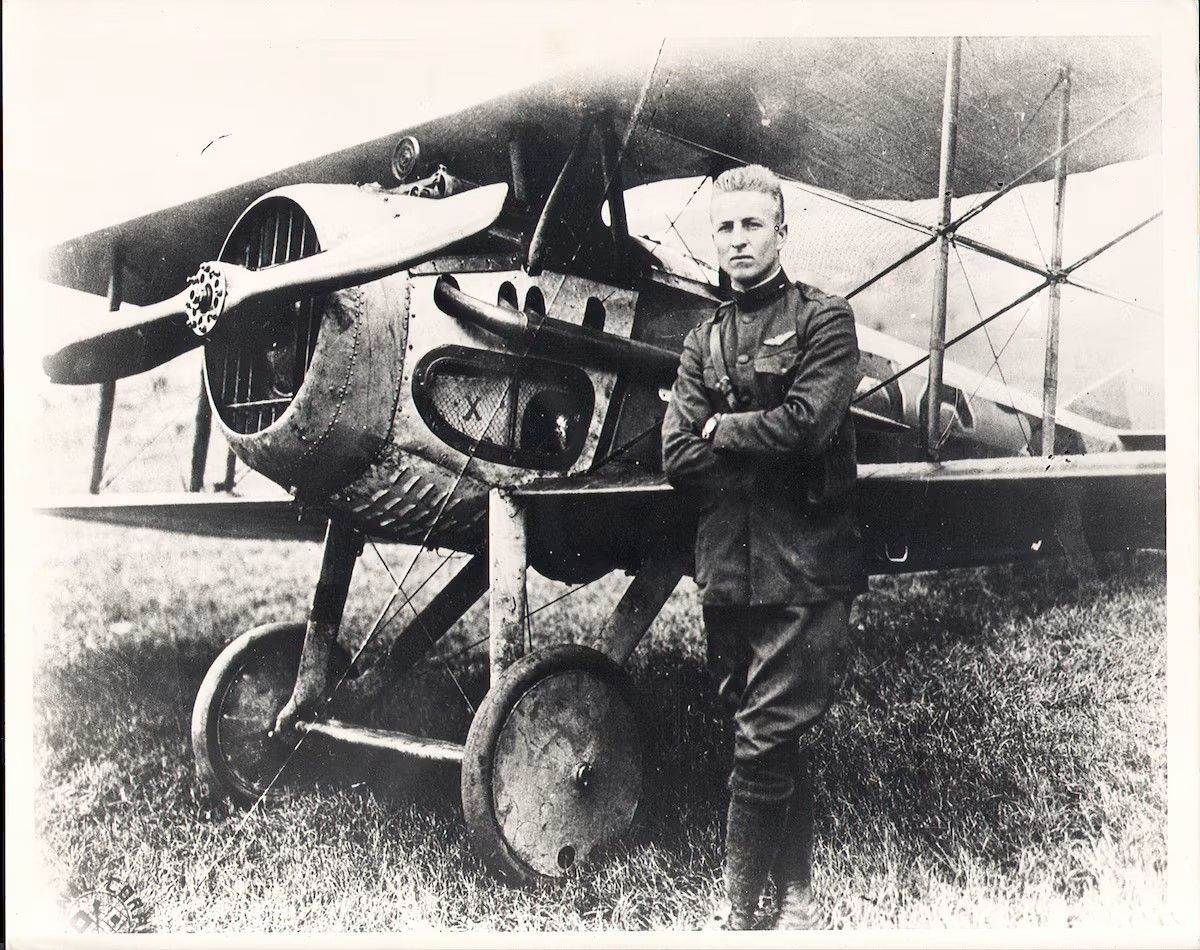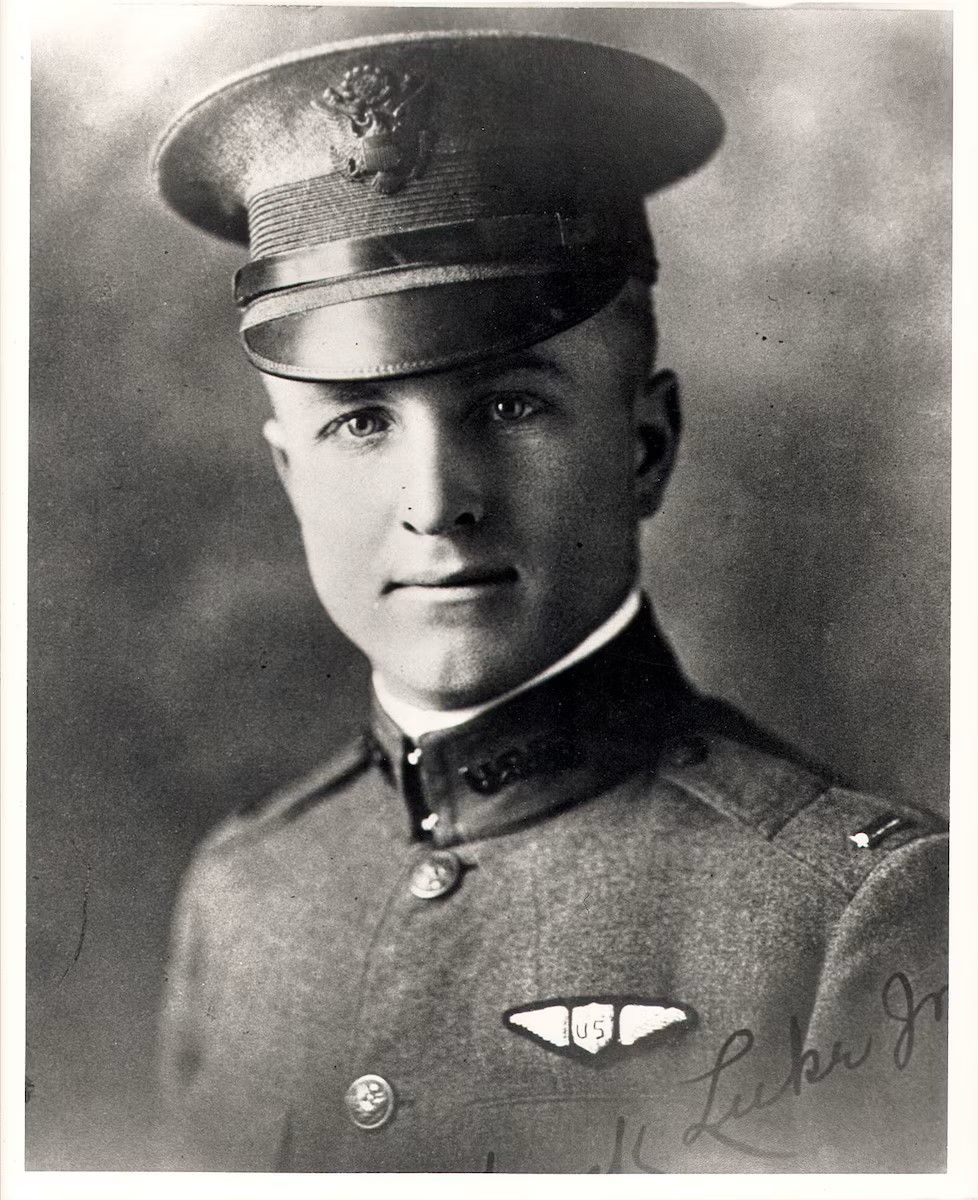Summary
- 1st Lt. Frank Luke Jr. was a Medal of Honor recipient with an impressive but tragically short combat career.
- Luke was renowned for his aerial combat prowess, destroying 14 German balloons and 4 aircraft in just 17 days.
- Despite his young age, Luke’s legacy lives on with honors like Luke AFB in Arizona and displays at the USAF Museum.
Manfred von Richthofen AKA “The Red Baron.” Oswald Boelcke. Eddie Rickenbacker. Billy Bishop. When one thinks of flying aces of the First World War, chances are these are the names that come to mind.
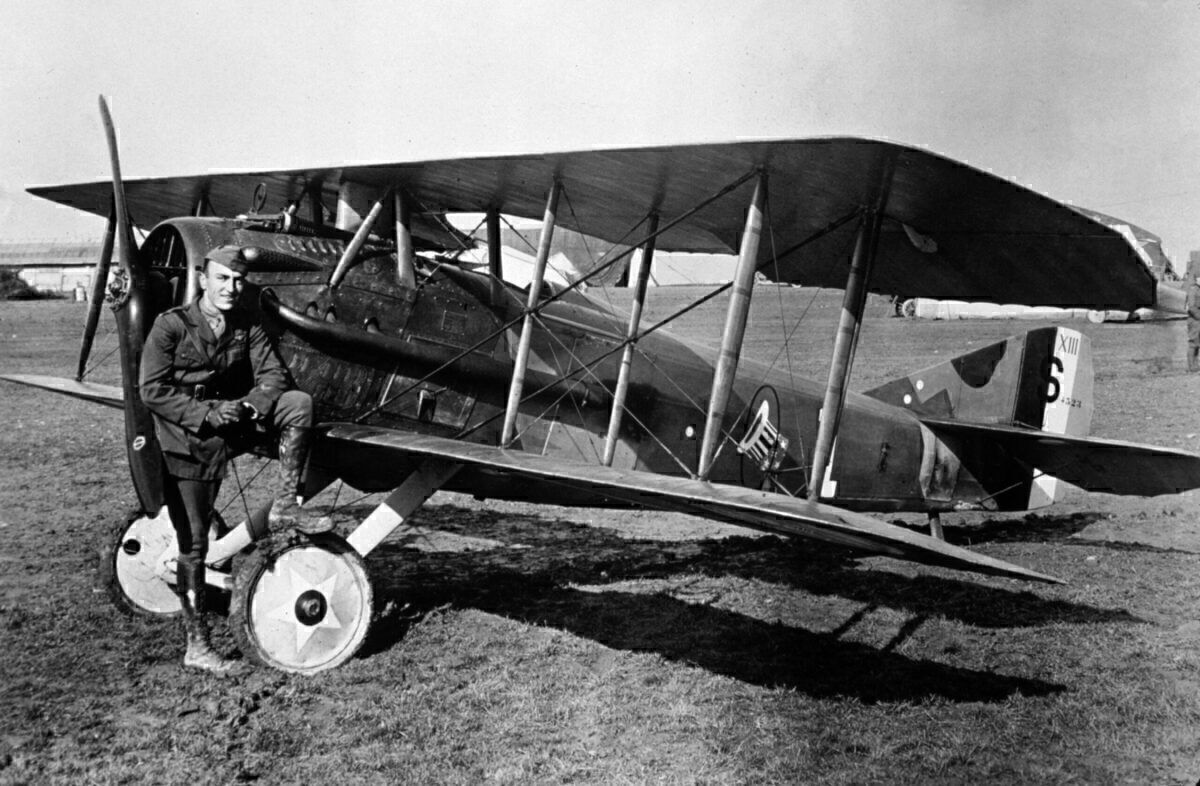
Related
Eddie Rickenbacker’s Impressive Journey To Lead Eastern Air Lines
But there’s another air ace of “The Great War” whose name isn’t quite as famous as the four aviators mentioned in the previous paragraph, yet he was a Medal of Honor recipient and has a US Air Force base named in his honor. Simple Flying now looks at the brief but noteworthy military aviation career of 1st Lt Frank Luke Jr., United States Army Air Service (USAAS).
Frank Luke’s early life
Frank Luke Jr. was born on May 19, 1897, in Phoenix, Arizona. As per the Lt. Frank Luke Jr. Museum, his parents were Frank Luke Sr., who had emigrated from Germany in 1873 (rather ironic in light of the fact that Junior would end up going to war against Senior’s country of birth), and the former Ms. Tillie Lubenow (about whom I don’t have any additional information, except that she was also a German immigrant). Frank Jr. was the fifth child out of nine kids. He learned how to shoot and owned his first gun at age 12, thus honing at an early age the marksmanship skills that would later serve him so well in adulthood as a fighter pilot.
Frank excelled in sports at Phoenix Union High School, participating in basketball, track (he was captain of the track team), bare-knuckled boxing, and football; reportedly, he once suffered a broken collarbone during a particularly important football game, but refused to leave the field until the game was over.
He worked briefly in the copper mines, and it was whilst he was engaged in such work that he learned about America’s entry in WWI, receiving the news when he rode into the mining town of Globe. Frank spent the next several days contemplating enlistment.
Frank’s initial military career
Indeed, on September 25, 1917, young Frank — aged 20 at the time — put those thoughts into action, enlisting as a private in the Aviation Section of the US Army Signal Corps. As his museum’s bio page states:
“The Aviation Section of the Signal Corps drew him like a magnet, for those who flew were true adventurers. Besides, the freedom of flight suited his individualistic temperament, a temperament born of men who had carved a home and a living out of the Southwestern frontier. ”
Frank went through pilot training in Texas and California and was commissioned as a 2nd Lieutenant in March 1918, deploying to France for further training shortly thereafter.
Frank’s wartime service (and death)
Upon his arrival in France, Lt Luke was assigned to the 1st Pursuit Grup, 27th Aero Squadron. He quickly earned a reputation for being “wild and reckless” (which didn’t sit well with some of his squadron mates), but also completely fearless. His combat career turned out to be tragically short, yet it was long enough to cement his status as a legend in the fighter pilot community. To put that in proper perspective, we turn to the Fact Sheets of the 944th Fighter Wing at Luke AFB:
“His exploits ranged **only a scant 17 days**, but in this time, as records now reflect, he destroyed 14 German balloons and four aircraft, earning him the title of the ‘Arizona Balloon Buster.'” [emphasis added]
“Luke’s commander, Maj. H.E. Hartney, said of him, ‘No one had the sheer contemptuous courage that boy possessed. He was an excellent pilot and probably the best flying marksman on the Western Front. We had any number of expert pilots and there was no shortage of good shots, but the perfect combination, like the perfect specimen of anything in the world, was scarce. Frank Luke was the perfect combination.'”
Meanwhile, no less than the aforementioned Eddie Rickenbacker, America’s leading air ace of WWI, had this to say about the hotshot young lieutenant:
“He was the most daring aviator and greatest fighter pilot of the entire war. His life is one of the brightest glories of our Air Service. He went on a rampage and shot down fourteen enemy aircraft, including ten balloons, in eight days. No other ace, **even the dreaded Richthofen**, had ever come close to that.” [emphasis added]
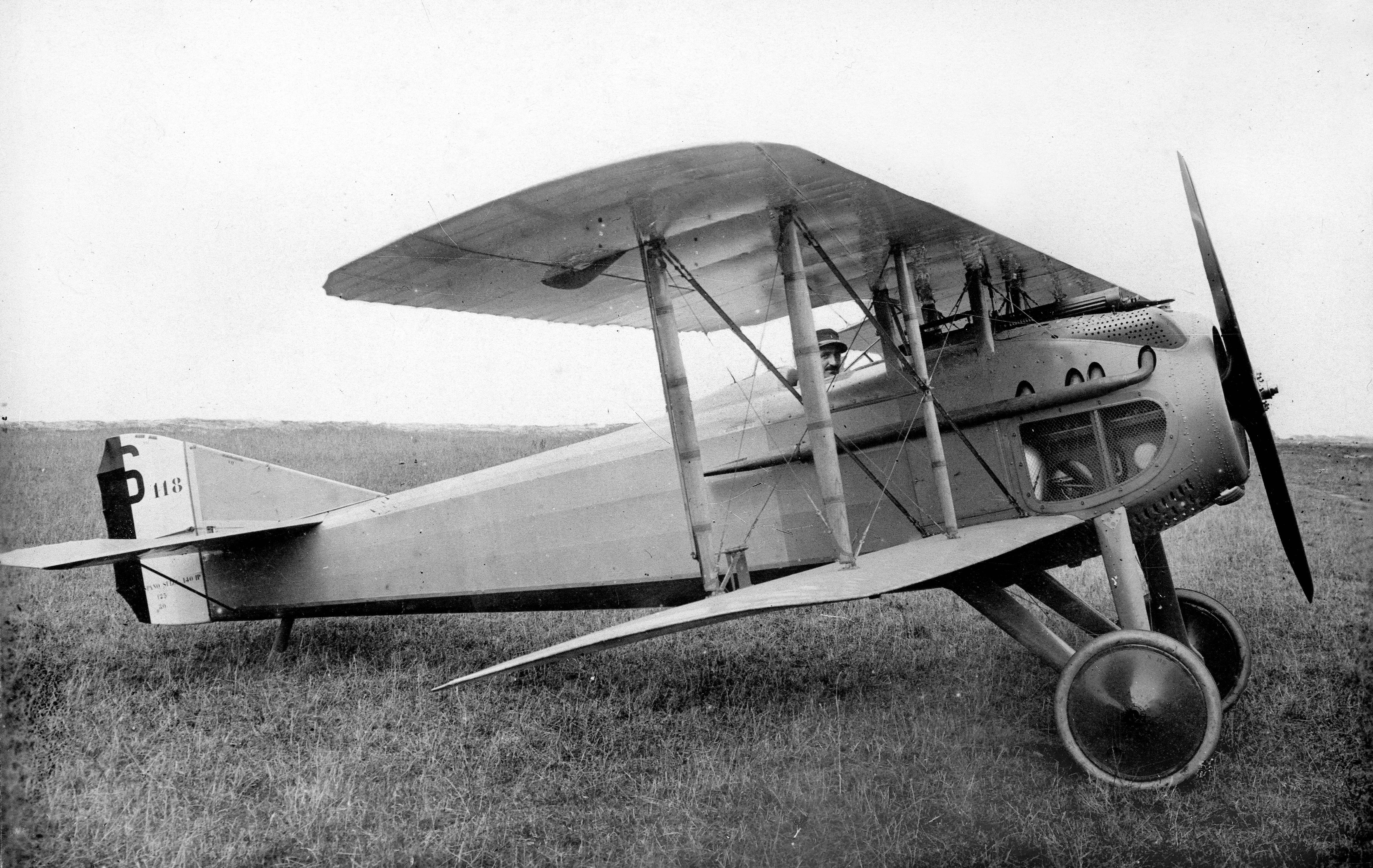
Related
The High-Performance Of France’s SPAD S.VII Aircraft
The plane was an integral force during World War I.
Frank’s aerial victory tally ranked him second only to Rickenbacker among pilots serving only with the American Expeditionary Forces (AEF). Luke’s four fixed-wing aircraft kills consisted of three Fokker D.VIIs and a Halberstadt C-type observation plane. Frank’s own plane was a French-made SPAD XIII, which, though nowhere near as famous as the British-built Sopwith Camel, was nonetheless an excellent biplane fighter in its own right, boasting a max airspeed of 131 mph (211 km/h; 114 kn) and wielding either two .303 caliber (7.7 mm) Vickers machine guns or two Marlin M1917/M1918 machine guns.
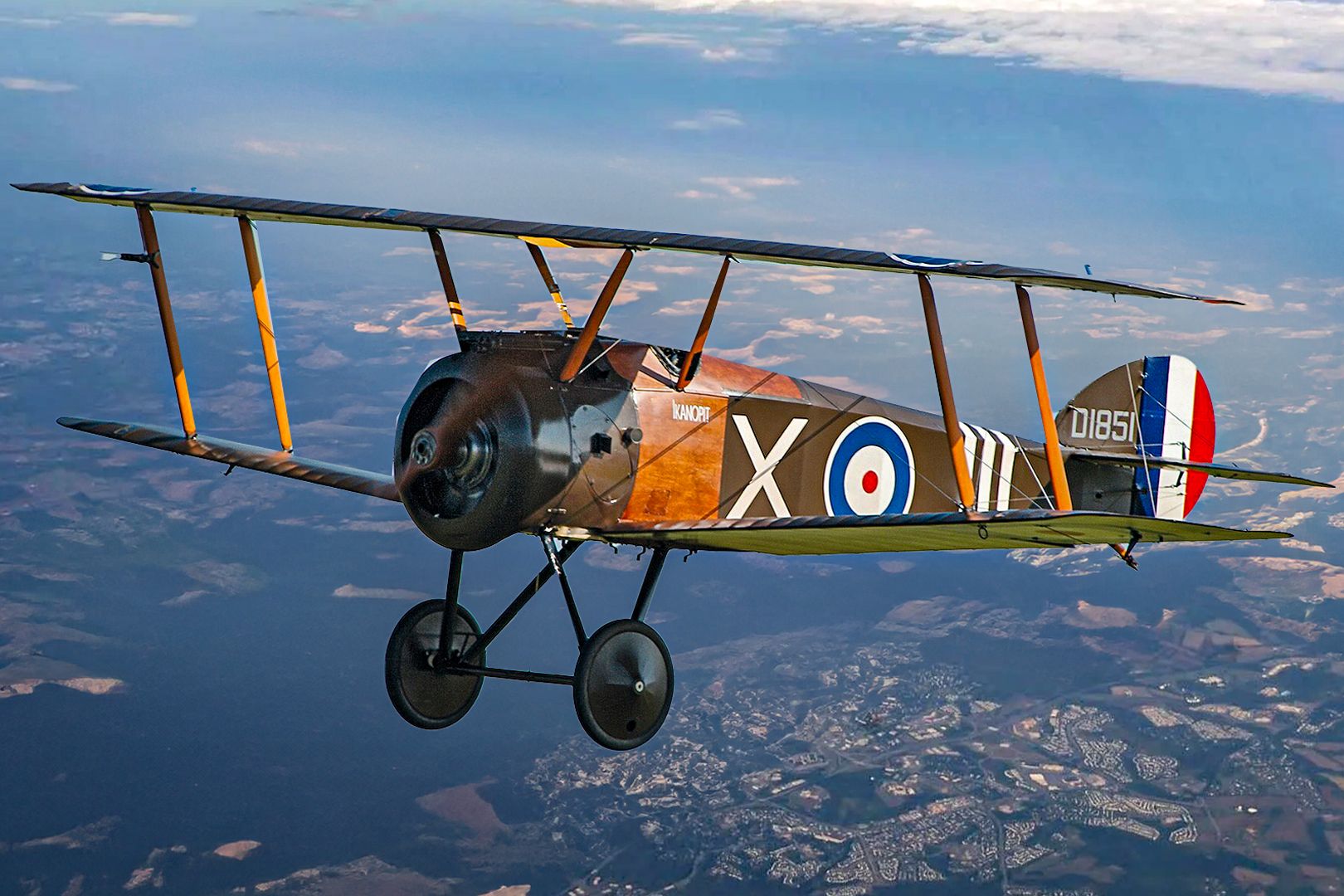
Related
Snoopy’s Dream Plane: Why The Sopwith Camel Is Britain’s Most Famous Fighter Of WWI
The Sopwith Camel is Britain’s most iconic WWI fighter. Partially for its real-world achievements, and partially thanks to a beloved cartoon dog.
Sadly, on September 29, 1918, Frank Luke’s meteoric career came to an end. Whilst flying over the French village of Murvaux (near the Ruisseau de Bradon, a stream leading to the Meuse River), he attacked and shot down three German observation balloons, but these would turn out to be his final aerial victories, as in the process was wounded in the shoulder by a single machine gun bullet fired from a hilltop above him. Nonetheless, Lt Luke proceeded to strafe some German ground troops before making an emergency landing about three miles west of the village.
Weakened from the loss of blood, he clambered out of the cockpit of his SPAD and started making his way toward the stream, hoping to reach the cover of the adjacent underbrush, but he collapsed after about 200 yards. German infantry troops advanced upon the dying aviator, but he still refused to go without a final fight, drawing his standard-issue Colt M1911 .45 caliber service pistol and discharging several rounds before finally succumbing to his wound. He was only 21 years old.
The 944th Fighter Wing picks up the story from there:
“Infuriated by the savagery of the American’s final attack, the German commandant of the village refused to have straw placed in the cart that removed Luke’s body. He also refused to allow some women to shroud his body with a sheet. Witnesses reported he kicked Luke’s body and snapped, ‘Get that thing out of my way as quickly as possible.'”
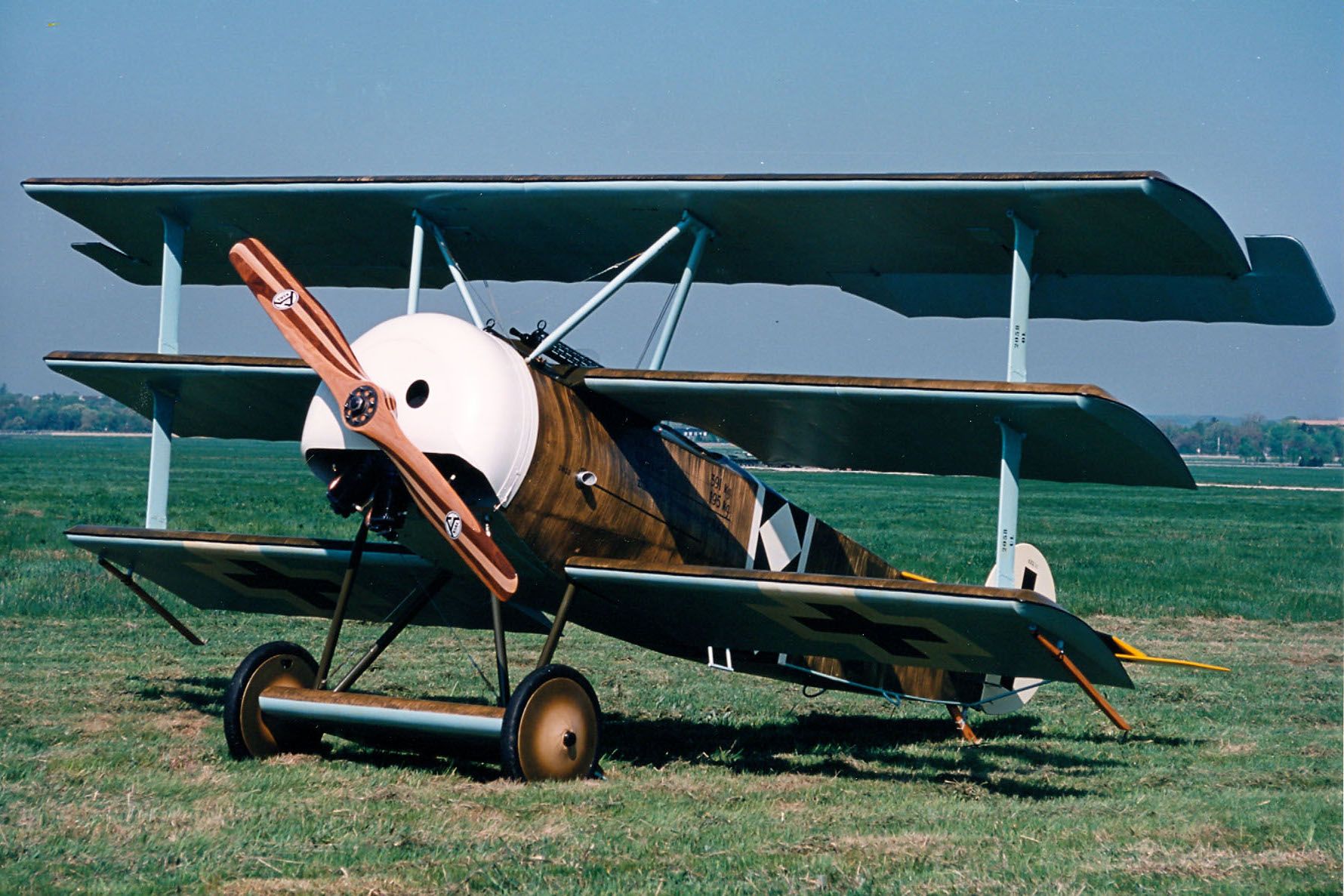
Related
Fokker Dr.I: The Story Of The First World War Triplane
Despite being outclassed, the aircraft was feared during the First World War.
“Two men, Cortlae Delbert and Voliner Nicolas, loaded the Arizonan’s body on a wagon, and escorted him to the cemetery and buried him.”
For the next two months, the brave young ace’s body was marked with a cross that simply said “Unknown American Aviator.” After the Allies finally secured the victory, the American forces retrieved his remains and re-interred them at his final resting place, the Meuse-Argonne American Cemetery and Memorial, located east of the village of Romagne-sous-Montfaucon.
He was posthumously awarded the Medal of Honor, along with two Distinguished Service Crosses, the Italian War Cross, and the Aero Club Medal for Bravery. Though still a 2nd Lt at the time of his death, Frank was posthumously promoted to 1st Lt.
His Medal of Honor (donated by his family), along with his flight goggles, the gunsight from his last SPAD, some of his written documents, and a fully restored SPAD XIII of the type he flew, are on display at the National Museum of the United States Air Force at Weight-Patterson AFB (near Dayton), Ohio. In addition, there is a SPAD XIII painted to represent the one flown by Lt Luke — consisting of approximately 80% original parts from several aircraft — on display at the 44th Street Sky Train Station of Phoenix’s Sky Harbor Airport. These two SPADS account for 40% of the five total SPADs surviving today.
Addition honors and tributes to Frank Luke (not all-inclusive):
- Memorial Statue by Roger Noble Burnham on the grounds of the State Capitol in Phoenix, Arizona.
- In the infamous 2023 Chinese spy balloon incident, the F-22 Raptors that shot down the balloon were given the call signs “Frank01” and “Frank02,” in honor of Luke’s reputation as a balloon-buster.
- Last but not least, as already indicated in the second paragraph of this article, Luke AFB, Arizona (15 miles west of Phoenix), is named in his honor; appropriately enough, it’s a fighter pilot training base (for both the F-16 Fighting Falcon and F-35 Lightning II).
Frank Luke’s Medal of Honor Citation
Courtesy of the Congressional Medal of Honor Society:
“After having previously destroyed a number of enemy aircraft within 17 days, he voluntarily started on a patrol after German observation balloons. Though pursued by eight German planes which were protecting the enemy balloon line, he unhesitatingly attacked and shot down in flames three German balloons, being himself under heavy fire from ground batteries and the hostile planes. Severely wounded, he descended to within 50 meters of the ground, and flying at this low altitude near the town of Murvaux opened fire upon enemy troops, killing six and wounding as many more. Forced to make a landing and surrounded on all sides by the enemy, who called upon him to surrender, he drew his automatic pistol and defended himself gallantly until he fell dead from a wound in the chest.”

